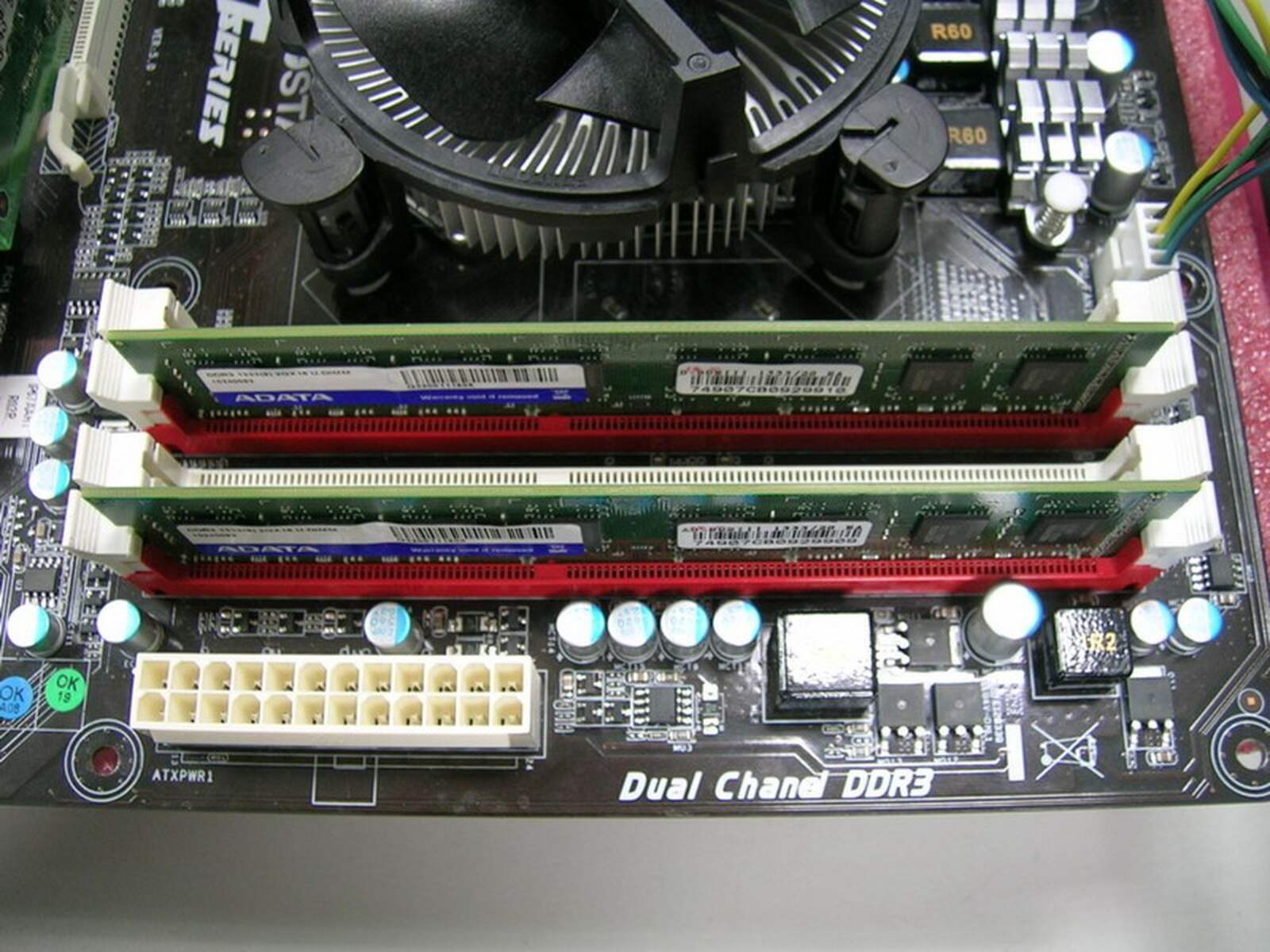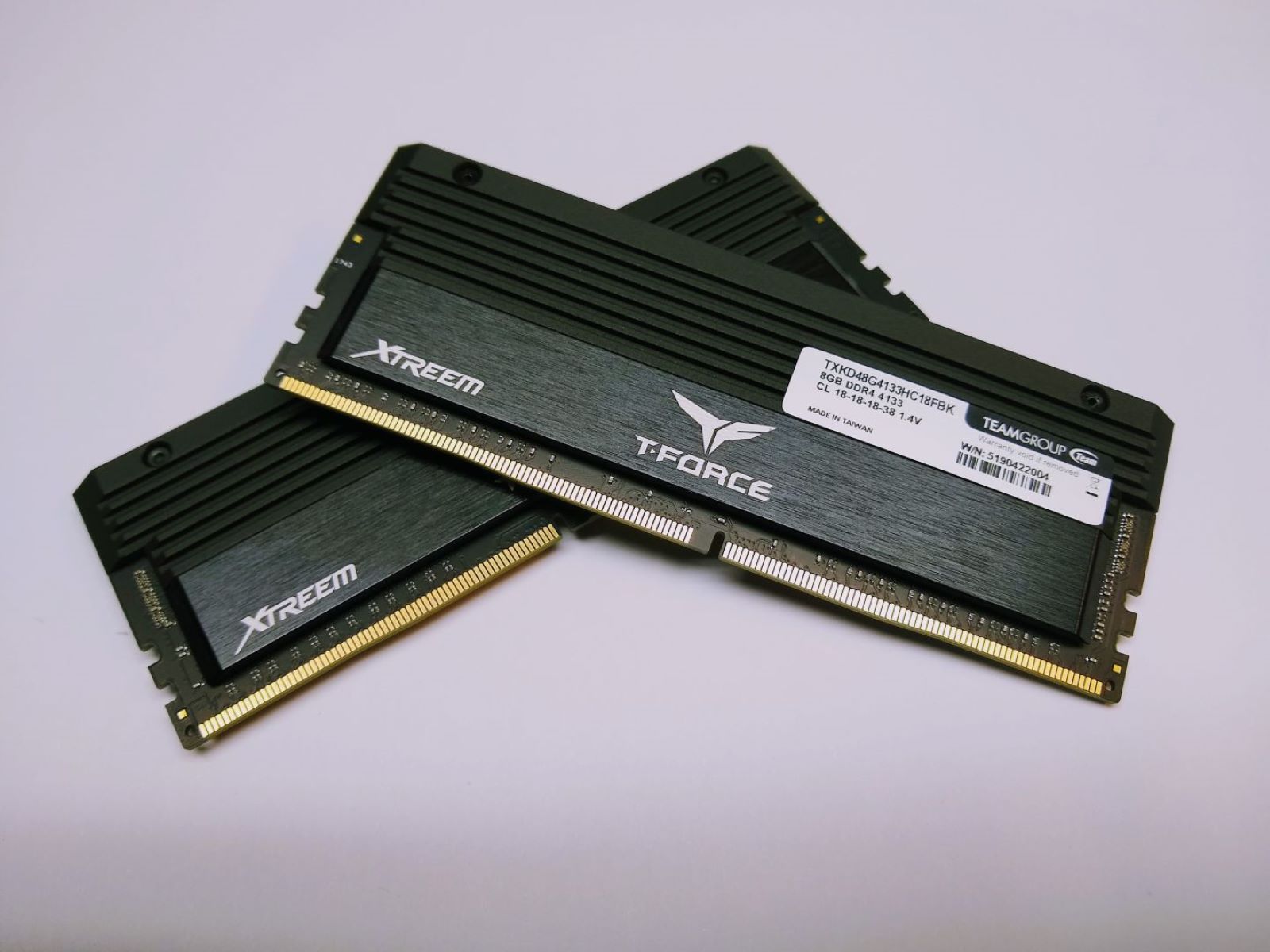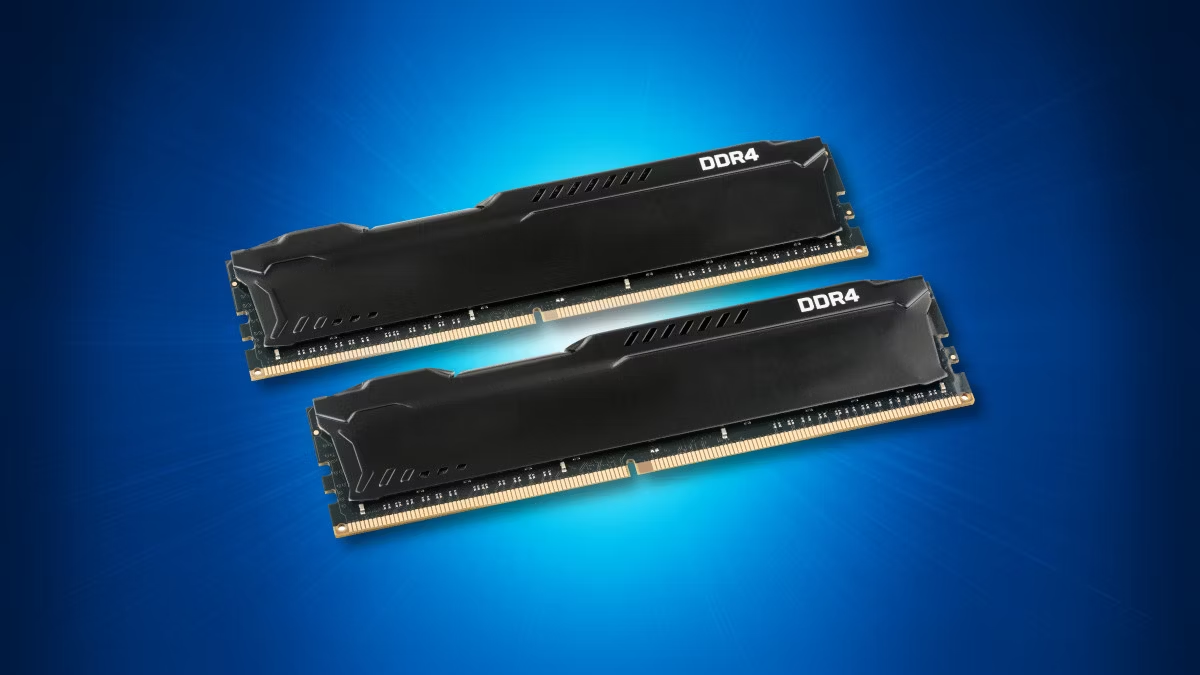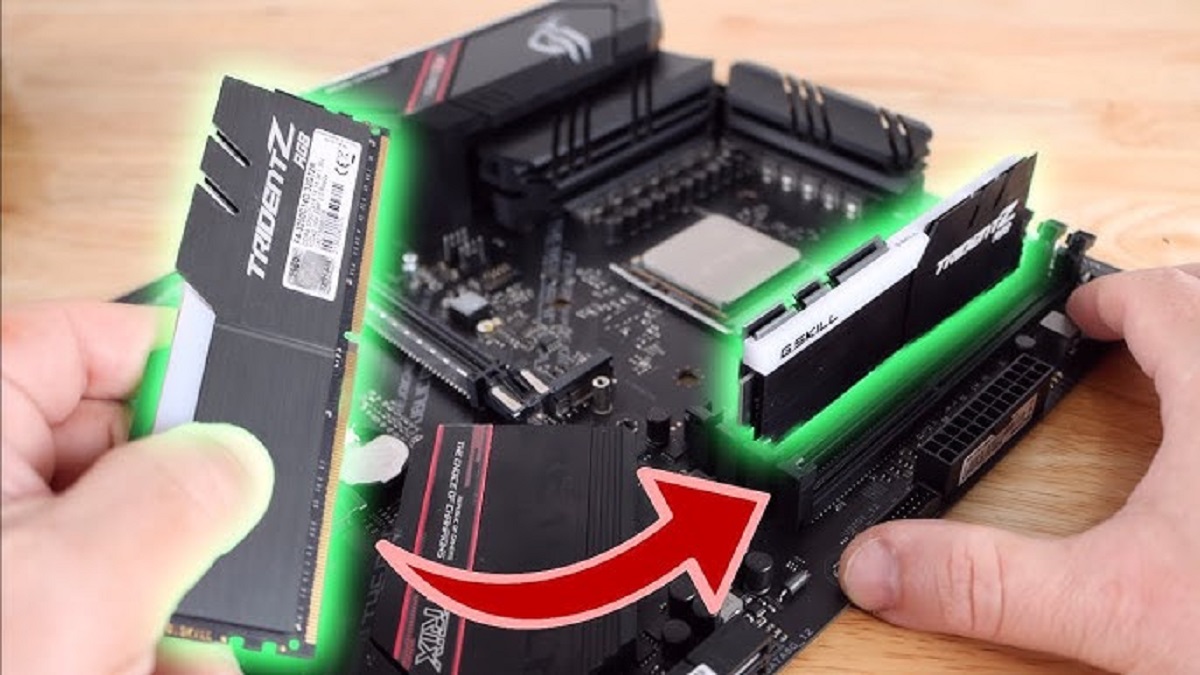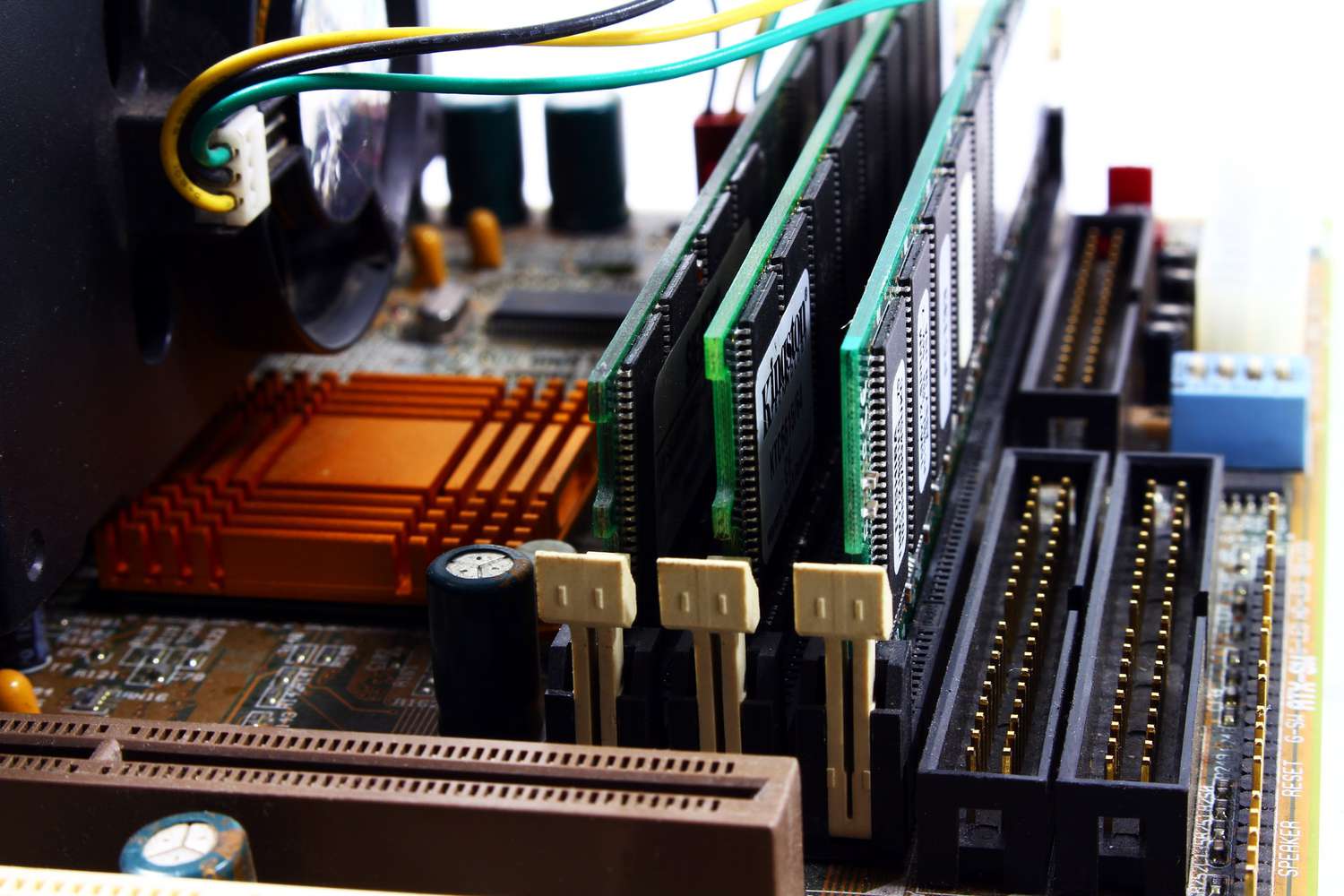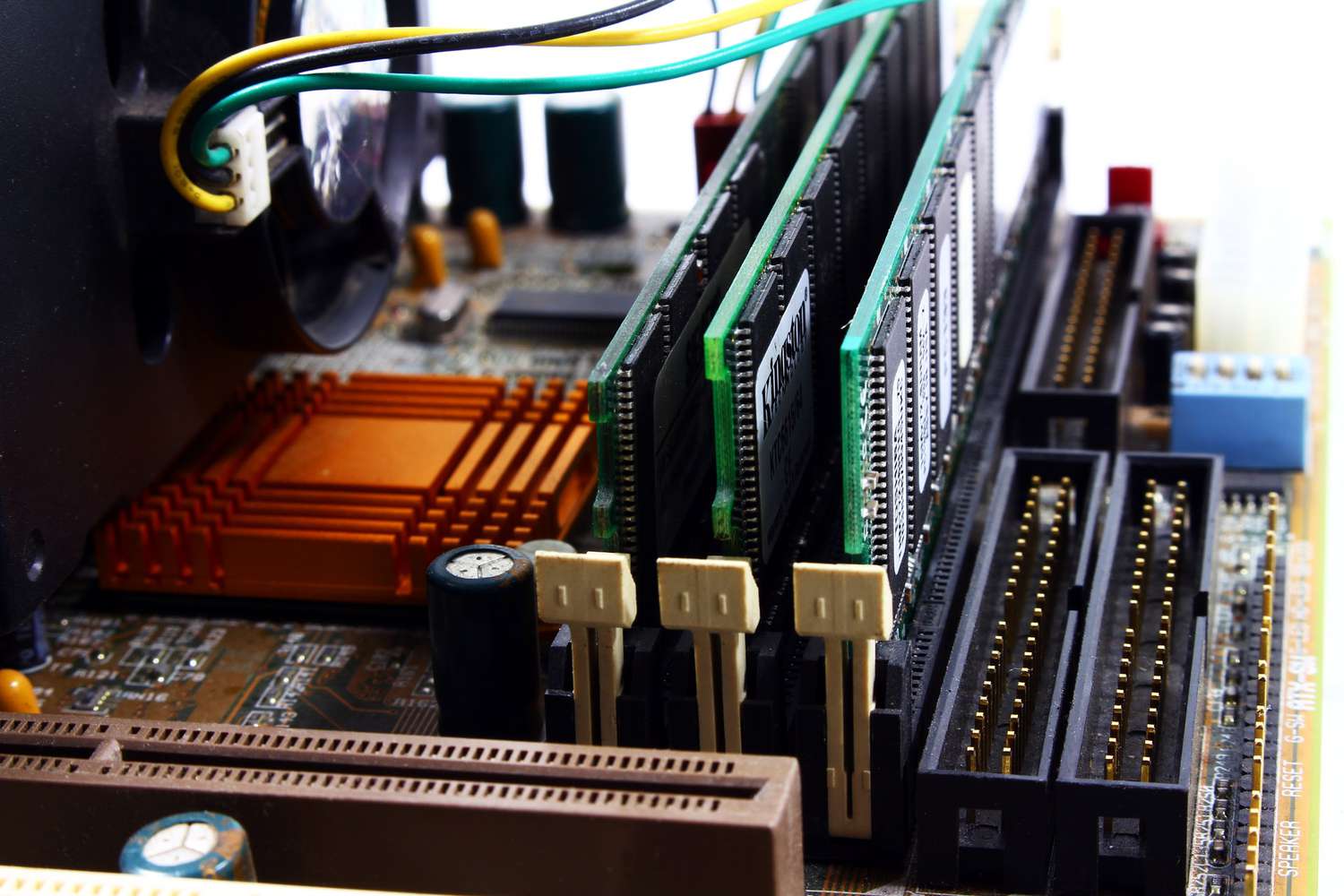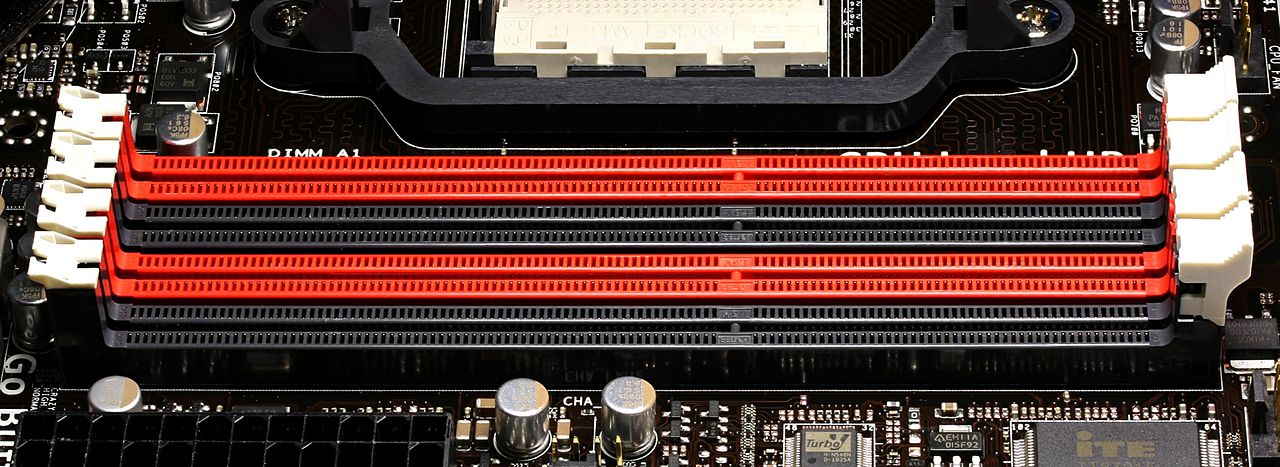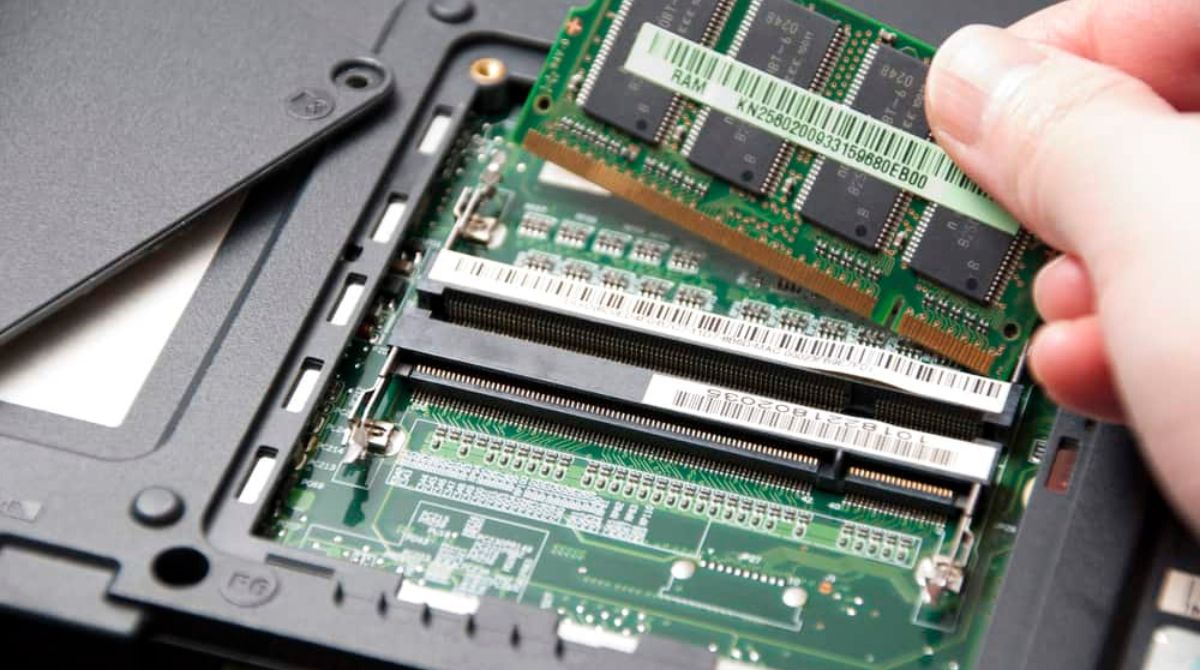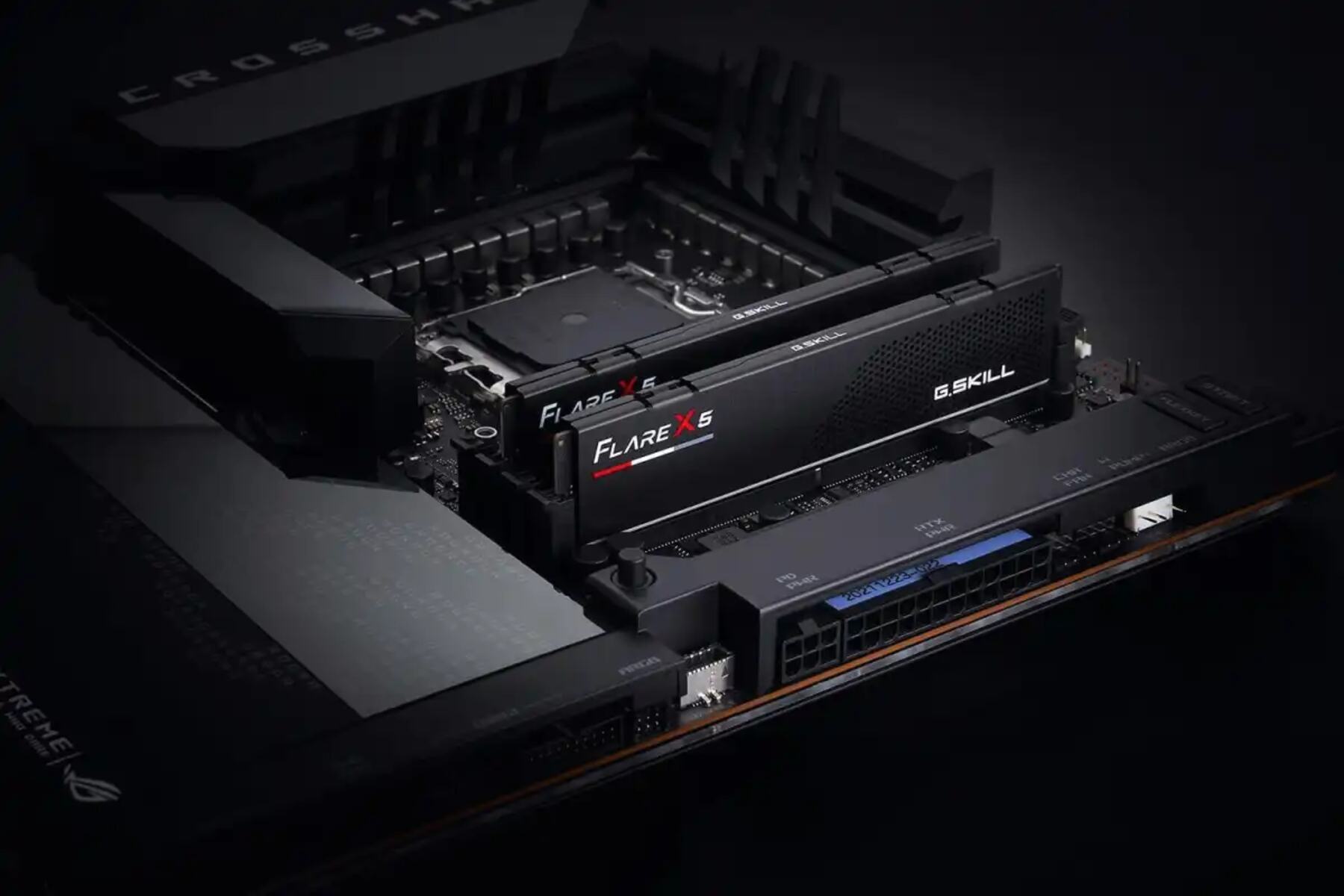What is Dual Channel RAM?
Dual channel RAM is a technology that allows a computer to access and transfer data simultaneously through two memory channels. It effectively doubles the data transfer rate between the RAM and the computer’s processor, resulting in improved overall system performance.
Traditionally, computers used single channel RAM, which had only one memory channel for data transfer. This meant that the processor had to wait for the data to be transferred from the RAM before it could perform any operations. With dual channel RAM, the processor can access and transfer data from both memory channels simultaneously, significantly reducing the waiting time and increasing the speed at which the computer can process information.
The dual channel configuration requires that you have matching pairs of RAM modules installed in the computer. These modules must have the same brand, speed, and capacity in order to take advantage of the dual channel technology.
When paired correctly, the RAM modules work together to provide a wider bandwidth for data transfer. This means that the computer can handle more data at once, allowing for faster multitasking, smoother performance in resource-intensive applications, and quicker loading times for programs and files.
It is important to note that not all computers support dual channel RAM. It depends on the motherboard’s chipset and the specifications of the computer. If your computer does support dual channel RAM, it is worth taking advantage of this technology to optimize your system’s performance.
In the next section, we will explore how you can check if your computer supports dual channel RAM.
Benefits of Dual Channel RAM
Dual channel RAM offers several benefits that can greatly enhance your computer’s performance and overall user experience. Here are some of the key advantages of using dual channel RAM:
- Improved Memory Bandwidth: By utilizing two memory channels simultaneously, dual channel RAM effectively doubles the memory bandwidth. This means that data can be transferred at a faster rate between the RAM and the processor, resulting in smoother multitasking and better overall system responsiveness.
- Enhanced System Performance: The increased memory bandwidth provided by dual channel RAM allows for faster data access and retrieval. This translates to improved performance in resource-intensive tasks, such as gaming, video editing, and 3D rendering. Applications will load quicker, and you’ll experience fewer delays and stuttering.
- Better Multitasking Capability: With dual channel RAM, your computer can handle multiple tasks simultaneously with greater efficiency. Whether you’re running multiple applications, browsing the web while streaming music or videos, or working on complex projects, dual channel RAM ensures smoother multitasking without significant performance drops.
- Optimized Gaming Experience: Gamers can benefit greatly from dual channel RAM, as it enables faster loading times and smoother gameplay. The improved memory bandwidth reduces lag and enhances the overall gaming experience, allowing for quicker and more responsive actions in fast-paced games.
- Improved Data Access Speed: Dual channel RAM reduces the latency in accessing data from the memory, facilitating faster access to frequently used files and programs. This results in improved system performance and reduced waiting times when launching applications or opening large files.
Overall, dual channel RAM provides significant performance improvements over single channel configurations. It maximizes the capabilities of your computer’s memory and enhances its responsiveness, making it an ideal choice for power users, gamers, and professionals who rely on their systems for demanding tasks.
Now that we understand the benefits of dual channel RAM, let’s move on to the next section and learn how to determine if your computer supports this technology.
Checking If Your Computer Supports Dual Channel RAM
Before upgrading or installing dual channel RAM on your computer, it’s essential to confirm that your system supports this technology. Here are a few ways to check if your computer is compatible with dual channel RAM:
- Check the Motherboard Manual: The easiest way to determine if your computer supports dual channel RAM is by referring to the motherboard’s manual. Look for specifications or features related to memory and check if dual channel functionality is mentioned. You can usually find the manual on the manufacturer’s website or with the packaging that came with your motherboard.
- Inspect the RAM Slots: Open your computer case and examine the RAM slots on your motherboard. If there are color-coded slots or markings, it’s an indication that the motherboard supports dual channel RAM. Dual channel memory configurations usually require you to install RAM modules in specific slots to enable the dual channel mode. Refer to the motherboard manual for the correct installation procedure.
- Use System Information Tools: System information tools can provide details about your system’s hardware and specifications. Utilize tools like CPU-Z, Speccy, or HWiNFO to gather information about your motherboard model and supported memory configurations. Look for mentions of dual channel memory support in the specifications provided by these tools.
- Consult the Manufacturer or Support: If you’re still unsure about your system’s dual channel RAM compatibility, reach out to the manufacturer or support forums for assistance. Provide them with the details of your system, including the motherboard model and any other relevant information. They will be able to guide you in determining if your computer supports dual channel RAM.
Remember that even if your computer supports dual channel RAM, you need to ensure that your RAM modules are properly installed in the correct slots to enable dual channel functionality. Incorrect installation can result in the system reverting to single channel mode, limiting the performance benefits of dual channel RAM.
In the next section, we will explore how to determine if your installed RAM is utilizing dual channel mode.
How to Tell If Your RAM Is Installed in Dual Channel
Once you have confirmed that your computer supports dual channel RAM, you may want to ensure that your installed RAM modules are utilizing the dual channel mode. Here are a few methods to determine if your RAM is installed in dual channel:
- Check BIOS/UEFI Settings: Restart your computer and access the BIOS or UEFI settings. Look for memory-related settings or configuration options. If the dual channel mode is enabled, it will be indicated in the settings. Consult the motherboard manual if you’re unsure how to navigate the BIOS/UEFI or locate the specific dual channel setting.
- Use Task Manager on Windows: If you are using Windows, you can use the Task Manager to check if your RAM is running in dual channel mode. Open the Task Manager by pressing
Ctrl+Shift+Escand go to the “Performance” tab. Under “Memory”, look for “Channels”. If it displays “Dual” or “Two”, it means your RAM is operating in dual channel mode. - Use System Information Tools: System information tools such as CPU-Z can provide detailed information about your computer’s hardware configuration. Download and run CPU-Z, go to the “Memory” tab, and look for “Channels”. If it displays “Dual”, your RAM is installed in dual channel mode.
- Physical Inspection: If you feel comfortable opening your computer case, you can physically inspect the RAM modules. Dual channel configurations usually require you to install RAM modules in specific slots, often indicated by color-coding or markings on the motherboard. Ensure that the modules are evenly installed in the correct slots to enable dual channel mode. Refer to the motherboard manual for guidance.
It’s important to note that if your RAM is not installed in dual channel mode, you may need to rearrange the modules or adjust the BIOS/UEFI settings to activate dual channel functionality. Proper installation and configuration are crucial to fully benefit from the performance advantages offered by dual channel RAM.
Now that you know how to determine if your RAM is installed in dual channel, let’s explore the performance differences between single channel and dual channel configurations in the next section.
Using CPU-Z to Check If Your RAM Is Dual Channel
CPU-Z is a popular system information tool that provides detailed information about your computer’s hardware. It can also be used to determine if your RAM is running in dual channel mode. Here’s how you can use CPU-Z to check if your RAM is dual channel:
- Download and Install CPU-Z: Visit the CPU-Z website (https://www.cpuid.com/cpu-z.html) and download the latest version of the software. Install it on your computer following the on-screen instructions.
- Launch CPU-Z: Once installed, launch CPU-Z by double-clicking on the desktop shortcut or searching for it in the Start Menu.
- Go to the “Memory” Tab: In the CPU-Z window, click on the “Memory” tab to access information about your RAM configuration.
- Check for Dual Channel Confirmation: Look for the “Channels #” field under the “General” section. If the value displayed is “Dual”, it means that your RAM is running in dual channel mode. If it displays “Single”, it means that your RAM is currently installed in single channel mode.
- Additional Information: CPU-Z also provides additional information about your RAM, such as the type, size, frequency, and timings. This can be useful if you’re planning to upgrade or troubleshoot your RAM in the future.
Using CPU-Z is a straightforward and reliable method to confirm if your RAM is running in dual channel mode. By ensuring that your RAM is installed and configured correctly, you can take full advantage of the improved performance and responsiveness that dual channel RAM offers.
In the next section, we will explore the differences in performance between single channel and dual channel RAM configurations.
Differences Between Single Channel and Dual Channel Performance
The performance difference between single channel and dual channel RAM configurations can have a significant impact on your computer’s overall speed and responsiveness. Here are the key differences between the two:
- Memory Bandwidth: The most notable difference is the memory bandwidth. Dual channel RAM provides double the bandwidth of single channel RAM, allowing for faster data transfer between the RAM and the processor. This results in improved multitasking capability, faster program loading times, and smoother overall system performance.
- Data Access Speed: Dual channel RAM offers faster data access speeds compared to single channel RAM. With two memory channels working in tandem, the processor can retrieve and process data more quickly, reducing latency and improving overall responsiveness. This can greatly benefit resource-intensive tasks such as gaming, video editing, and 3D rendering.
- Multitasking Performance: Dual channel RAM excels in multitasking scenarios. The increased memory bandwidth allows for seamless switching between multiple applications and smoother performance when running demanding tasks simultaneously. This means you can work on complex projects, stream media, and have multiple browser tabs open without experiencing significant performance drops.
- Gaming Experience: Gamers can expect noticeable improvements when using dual channel RAM. Games often require rapid data access and transfer, and dual channel RAM helps reduce lag and improve overall gameplay. Faster loading times, smoother frame rates, and reduced stuttering are common benefits of running games with dual channel RAM.
- Application Responsiveness: Dual channel RAM enhances the responsiveness of applications and operating system functions. Whether it’s launching programs, saving files, or navigating through complex software, the increased memory bandwidth provided by dual channel RAM ensures a snappier and more fluid experience.
It’s important to note that the actual performance impact will vary depending on the specific tasks and applications you use. While dual channel RAM can provide significant performance benefits, it may not be as noticeable in everyday tasks that don’t heavily rely on memory bandwidth.
If your computer supports dual channel RAM, it is highly recommended to take advantage of this technology, especially if you engage in activities that demand high memory bandwidth, such as gaming, multimedia editing, or running virtual machines. Upgrading to dual channel RAM can unlock the full potential of your system and provide a noticeable boost in performance.
Now that we’ve explored the differences in performance between single channel and dual channel RAM, let’s discuss how you can upgrade to dual channel RAM in the next section.
Upgrading to Dual Channel RAM
If your computer currently utilizes single channel RAM and supports dual channel technology, upgrading to dual channel RAM can provide a significant performance boost. Here’s a step-by-step guide to help you upgrade to dual channel RAM:
- Check Compatibility: Before purchasing new RAM modules, ensure that they are compatible with your motherboard and meet the necessary specifications. Refer to your motherboard’s manual or consult the manufacturer’s website for compatibility information such as RAM type, speed, and capacity.
- Purchase Matching RAM Modules: To enable dual channel mode, you need to install matching pairs of RAM modules. This means the modules should have the same brand, speed, and capacity. Ideally, purchase a dual channel kit that contains two RAM modules specifically designed for dual channel operation.
- Power Off and Unplug: Before working on your computer’s internals, make sure to power off the computer and unplug it from the electrical outlet. This ensures your safety and prevents any damage to the components.
- Open the Computer Case: Depending on your computer’s design, remove the side panel or access the compartment that houses the RAM slots. Refer to your computer or motherboard manual for specific instructions on accessing the RAM slots.
- Remove Existing RAM: Gently release the retention clips on the sides of the RAM module by pushing them outward. Carefully remove the existing RAM module from the slot by pulling it straight upwards. Repeat this process for all the RAM modules you plan to replace.
- Install the New RAM: Take the new RAM modules, align the notch on the module with the key in the RAM slot, and insert it at a slight angle. Apply even pressure to both ends of the module until it clicks into place. Ensure that the retention clips securely hold the RAM module in place.
- Power On the Computer: Once the new RAM modules are securely installed, close the computer case and reconnect any cables or peripherals. Power on the computer to verify the new RAM installation.
- Verify Dual Channel Operation: After booting into the operating system, you can use CPU-Z or other system information tools to confirm if your newly installed RAM is running in dual channel mode. Follow the steps outlined in the previous section on using CPU-Z to check for dual channel confirmation.
It’s important to note that upgrading to dual channel RAM requires a compatible motherboard and the correct installation of matching RAM modules. If you are unsure about the upgrade process or need assistance, consult a professional or refer to the manufacturer’s documentation for guidance.
By upgrading to dual channel RAM, you can fully unleash the potential of your system and enjoy improved performance, faster data transfer speeds, and enhanced multitasking capabilities.
In the next section, we will wrap up this article with a final summary.
Conclusion
Understanding the benefits of dual channel RAM and knowing how to determine if your computer supports this technology is essential for maximizing your system’s performance. Dual channel RAM offers faster memory bandwidth, improved multitasking capabilities, and enhanced data access speeds compared to single channel configurations.
To check if your RAM is installed in dual channel mode, you can refer to the motherboard manual, physically inspect the RAM slots, use system information tools like CPU-Z, or check the BIOS/UEFI settings. These methods will help you confirm if your computer is utilizing the dual channel functionality efficiently.
If your computer supports dual channel RAM and you are currently using single channel RAM, upgrading to dual channel RAM can provide a significant performance boost. Remember to ensure compatibility, purchase matching RAM modules, and follow the proper installation procedure to enable dual channel mode.
Overall, dual channel RAM can greatly enhance your computer’s speed, responsiveness, and multitasking capabilities. Whether you’re a gamer, content creator, or power user, taking advantage of dual channel technology will unlock the full potential of your system.
Now that you have a comprehensive understanding of dual channel RAM, its benefits, and the steps to upgrade, you can make informed decisions to optimize your computer’s performance and enjoy a smoother and more efficient computing experience.







